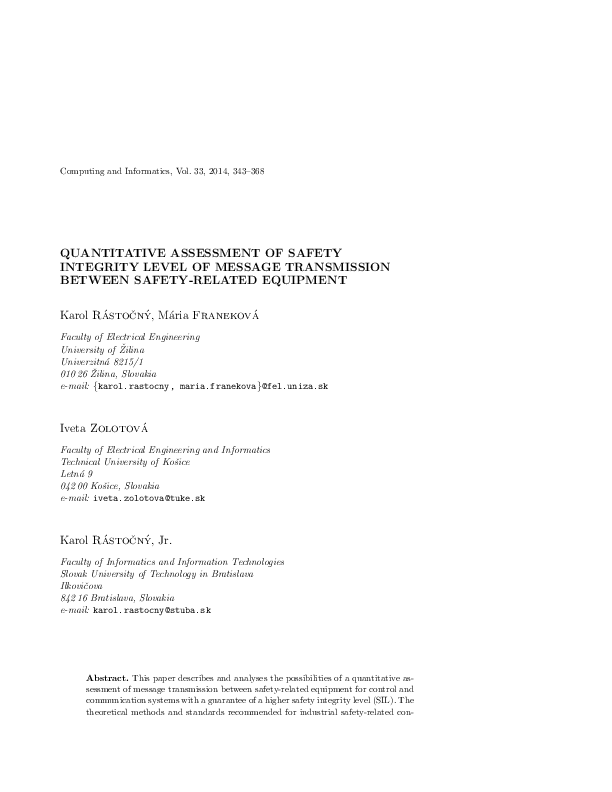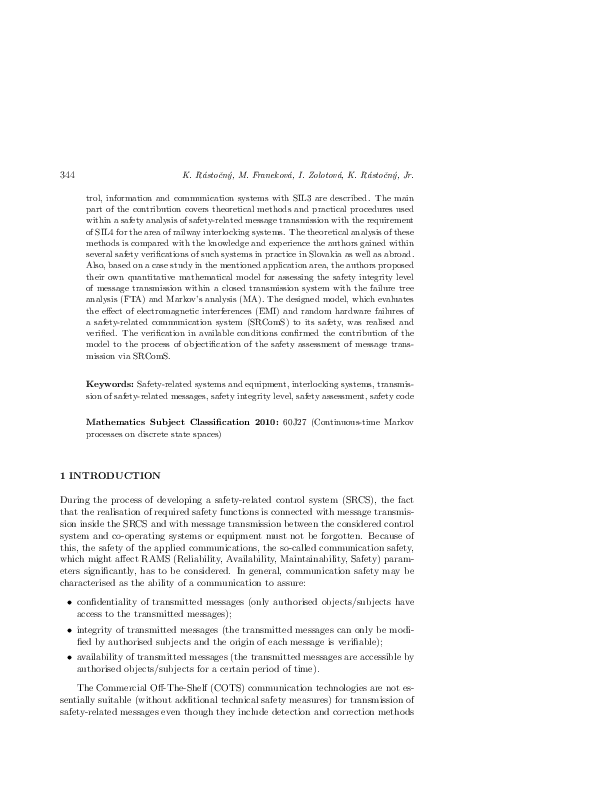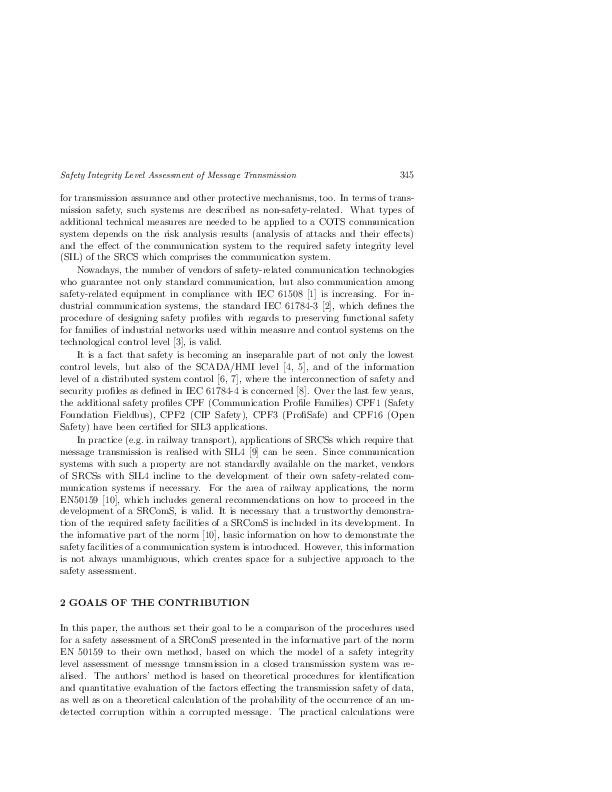Quantitative Assessment of Safety Integrity Level of Message Transmission between Safety-Related Equipment
keywords: Safety-related systems and equipment, interlocking systems, transmission of safety-related messages, safety integrity level, safety assessment, safety code
This paper describes and analyses the possibilities of a quantitative assessment of message transmission between safety-related equipment for control and communication systems with a guarantee of a higher safety integrity level (SIL). The theoretical methods and standards recommended for industrial safety-related control, information and communication systems with SIL3 are described. The main part of the contribution covers theoretical methods and practical procedures used within a safety analysis of safety-related message transmission with the requirement of SIL4 for the area of railway interlocking systems. The theoretical analysis of these methods is compared with the knowledge and experience the authors gained within several safety verifications of such systems in practice in Slovakia as well as abroad. Also, based on a case study in the mentioned application area, the authors proposed their own quantitative mathematical model for assessing the safety integrity level of message transmission within a closed transmission system with the failure tree analysis (FTA) and Markov's analysis (MA). The designed model, which evaluates the effect of electromagnetic interferences (EMI) and random hardware failures of a safety-related communication system (SRComS) to its safety, was realised and verified. The verification in available conditions confirmed the contribution of the model to the process of objectification of the safety assessment of message transmission via SRComS.
mathematics subject classification 2000: 60J27 (Continuous-time Markov processes on discrete state spaces)
reference: Vol. 33, 2014, No. 2, pp. 343–368


